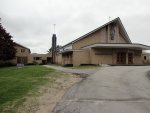markhb
Senior Member
- Joined
- Oct 19, 2013
- Messages
- 1,559
- Reaction score
- 1,353
The Public Market was amazing. There were a lot of articles about its failure at the time, but many were of the "you need to know the inside background we aren't telling to really get it" variety. I definitely think the final blow was that, after Betty Noyce died, Owen Wells at Libra had little interest in preserving her dream and sold it to help fund his own, Pineland Farms. JMO based on what I read at the time.

